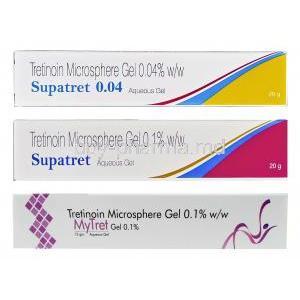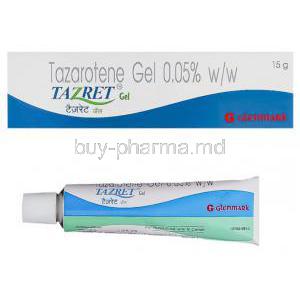I. Introduction to Azelaic Acid
Azelaic acid, a dicarboxylic acid, stands as a multifaceted skincare ingredient renowned for its therapeutic properties in dermatology. Its molecular structure, characterized by the presence of nine carbon atoms and two carboxyl groups, underpins its efficacy in treating a variety of skin conditions.
- The genesis of azelaic acid as a prominent skin care solution traces back to its initial discovery in grains.
- Over time, its application has expanded significantly, underpinned by robust research and clinical trials.
II. Uses of Azelaic Acid
Azelaic acid is predominantly utilized in dermatology to ameliorate skin conditions such as acne, rosacea, and hyperpigmentation. Its versatility is reflected in the array of formulations available, from creams to gels.
Approved Dermatological Uses:
Azelaic acid is primarily prescribed for acne due to its antibacterial and comedolytic properties.
azelaic acid for acne
It reduces bacterial growth and keratinization, which are pivotal in acne development.
Role in Treating Rosacea:
It alleviates inflammation and redness associated with rosacea.
azelaic acid for hyperpigmentation
It inhibits tyrosinase, an enzyme essential for melanin production, thus reducing pigmentation.
azelaic acid perioral dermatitis
Topical creams or gels containing azelaic acid, such as Finacea Gel, are sometimes used to treat perioral dermatitis. While these treatments do not cure perioral dermatitis, they can reduce the inflammation caused by the condition and help to manage the symptoms.
III. Off-Label Uses of Azelaic Acid
While azelaic acid is celebrated for its dermatological applications, it also harbors potential in addressing other less common skin conditions.
- Exploratory research has illuminated its efficacy in treating hair loss, particularly by enhancing follicular health.
- Its anti-inflammatory properties are being investigated in other dermatological conditions beyond its current FDA-approved uses.
IV. How Azelaic Acid Works
The mechanism by which azelaic acid ameliorates skin conditions involves a complex interplay of biochemical processes.
- It acts by inhibiting the synthesis of keratin, a key protein involved in skin turnover, thereby preventing the formation of acne lesions.
- Its ability to penetrate the skin barrier effectively allows it to exert its effects at a cellular level, contrasting it with other topical agents.
Comparatively, azelaic acid is often found to be as effective as many other topical acne treatments but with fewer side effects.
V. Dosage and Administration
The therapeutic regimen for azelaic acid varies based on the condition being treated.
- It is typically applied twice daily to clean, dry skin.
- The consistency of application and the duration of treatment depend largely on the severity of the condition and the patient’s response to the medication.
VI. Composition and Properties
Azelaic acid's stability and effectiveness are influenced by its chemical makeup and the type of formulation.
- Available in several formulations such as creams, gels, and foams, each suited to different skin types and conditions.
- Recent innovations have improved the stability and efficacy of these formulations, making azelaic acid a staple in dermatological treatments.
azelaic acid and retinol
Yes, you can use azelaic acid and retinol together to tackle acne and hyperpigmentation, but not in the same routine. Azelaic acid soothes skin, fights acne, and fades hyperpigmentation, while retinol stimulates collagen production and reduces fine lines.
azelaic acid and tretinoin
While they have some similar properties, tretinoin is a more important ingredient for increasing cell renewal and repair. Tretinoin and azelaic acid make a great combination, because azelaic acid can enhance the effects of tretinoin when used to treat acne, pigmentation and brighten skin in general.
azelaic acid and vitamin c
Yes, you can use vitamin C and azelaic acid products together—these ingredients complement one another. Using them together may speed up the results for evening skin tone and fading marks by targeting the issue via multiple pathways.
VII. Storage Requirements
Proper storage of azelaic acid is essential to maintain its efficacy.
- It should be stored at room temperature, away from direct sunlight and moisture.
- The shelf life typically spans several years, but it is crucial to heed the expiry date to ensure effectiveness.
- Patients are advised to follow specific storage guidelines to preserve the integrity of the medication.
VIII. Drug Interactions and Considerations
Azelaic acid, while largely safe, can interact with certain medications and products, impacting its efficacy and safety.
Common Drug Interactions:
It may interact with peeling agents, astringents, and alcohol-containing products, exacerbating skin irritation.
Interaction with Over-the-Counter Products:
Concurrent use of other topical acne treatments should be approached with caution to avoid excessive skin dryness and irritation.
Effects on Systemic Absorption:
While minimal, the systemic absorption can be affected when combined with occlusive dressings or extensive application areas.
IX. Warnings and Contraindications
Understanding the limitations of azelaic acid application ensures both safety and effectiveness in treatment.
General Warnings for Use:
Avoid contact with eyes, mouth, and other mucous membranes.
Specific Contraindications:
Not recommended for individuals with a known hypersensitivity to azelaic acid or any of its components.
Risks Associated with Misuse:
Excessive use can lead to severe irritation and exacerbation of the condition.
X. Azelaic acid side effects
While azelaic acid is generally well tolerated, it can cause side effects, particularly at the onset of treatment.
Common and Minor Side Effects:
Includes itching, burning, and redness at the application site.
Addressing Serious Adverse Reactions:
Severe reactions such as worsening of asthma symptoms in susceptible individuals should prompt immediate medical consultation.
Reporting Side Effects:
Adverse effects should be reported to healthcare providers to monitor treatment safety and adjust protocols if necessary.
XI. Special Considerations in Administration
Administering azelaic acid requires particular attention to specific patient groups to ensure both safety and efficacy.
Administration to Elderly Patients:
May require dose adjustments due to skin sensitivity.
Considerations for Pregnant Women and Nursing Mothers:
Generally considered safe, but it is advised to consult a healthcare provider.
azelaic acid pregnancy
Azelaic acid is a go-to for pregnant women! It is pregnancy category B, and considered safe to use during pregnancy and breastfeeding. It is one of my favorite products to prescribe as a dermatology PA for many patients.
Guidelines for Pediatric Use:
Limited use in children under the age of 12 unless directed by a pediatric dermatologist.
XII. Overdose and Management
In cases of accidental overdose, immediate measures and symptomatic treatment are necessary.
Signs and Symptoms of Overdose:
May include severe irritation, redness, and peeling of the skin.
Immediate Actions and Antidote Information:
Discontinue use and apply symptomatic treatment with emollients or corticosteroid creams as needed.
Preventive Measures:
Educate patients on the correct application amount to prevent overdose incidents.
XIII. Handling Precautions
Safe handling of azelaic acid minimizes risks to both the user and the environment.
Safe Handling Practices:
Avoid inhalation of dust from the powder form and direct contact with the skin during handling.
Disposal and Environmental Concerns:
Follow proper disposal protocols to mitigate environmental impact.
Training for Healthcare Providers:
Ensure that healthcare providers are well informed about proper application techniques and precautions.
XIV. Important Precautions
Maintaining an optimal treatment outcome with azelaic acid involves adhering to several important practices.
Monitoring and Follow-up:
Regularly assess treatment progress and side effects.Lifestyle and Dietary Advice:
Advise on complementary lifestyle choices that support skin health.
Patient Education and Compliance Strategies:
Educate patients on the importance of adhering to the prescribed regimen for the best outcomes.
XV. FAQs
Can i use azelaic acid for long term?
Azelaic acid is definitely an ingredient you can keep in your skincare routine for months or even years. Over time, you may choose to switch to a product with a lower concentration or continue using the same dosage.
Does azelaic acid cause purging?
Unlike certain active ingredients, azelaic acid generally does not cause skin purging due to its unique mode of action. However, individual reactions can vary, and some individuals may experience a mild adjustment period when incorporating azelaic acid into their routine.
How to use azelaic acid?
Shake the foam can well before using. Apply a small amount of the medicine to each affected area and gently rub it in. You may apply cosmetics after the foam or gel has dried. Do not bandage or otherwise wrap the skin being treated unless directed to do so by your doctor.
Can you use azelaic acid with retinol?
Retinol and azelaic acid are safe and effective when layered and used together. Neither an AHA nor a BHA, azelaic acid is a chemical compound found naturally in certain plants. Thanks to its antibacterial and anti-inflammatory properties, it can be useful in treating acne and other skin conditions, including rosacea.
Is azelaic acid an exfoliant?
Azelaic acid is an exfoliant and can cause dryness and irritation. Easing into use slowly, using a pea-sized amount of product, and applying a moisturizer can help decrease side effects.
Is azelaic acid an aha?
Azelaic acid is neither an AHA nor a BHA. Instead, it's a dicarboxylic acid, which essentially does the work of both an AHA and BHA — working at the surface of your skin and also penetrating deeply.
Does azelaic acid help with acne?
Azelaic acid is a natural acid that can help improve mild acne and rosacea. Use it exactly as directed, and be patient — it may be weeks before you see a difference. Some burning or stinging at first is common, but if you have any other side effects, let your doctor know right away.
When to use azelaic acid?
Azelaic acid is an incredibly versatile and effective ingredient for tackling multiple concerns such as acne, rosacea and pigmentation: Reduces inflammation: Azelaic acid soothes irritation and helps to improve redness caused by inflammation in rosacea.
How does azelaic acid work?
Azelaic acid can counter or neutralize free radicals that cause inflammation. It has significant skin-calming effects and helps to improve redness. Evens skin tone. It decreases pigmentation, inhibiting an enzyme called tyrosinase that leads to hyperpigmentation, or dark patches of skin.



























